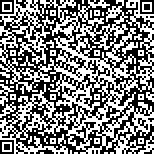| This article has been:Browse 1712Times Download 5424Times |

scan it! |
|
|
| DOI:10.13522/j.cnki.ggps.2019273 |
|
| Using Remote Sensing to Estimate Irrigation Area in Shenwu Region in Hetao Irrigation District |
|
TIAN Xin , LI Ruiping, WANG Sinan, FAN Leilei, YU Minghui
|
|
1. School of Water Conservancy and Civil Engineering, Inner Mongolia Agricultural University, Hohhot 010018, China;2.Weihai City Planning Technical Service Center Co., Ltd, Weihai 264200, China; 3.Inner Mongolia Autonomous Region Key Laboratory of Big Data Research and Application of Agriculture and Animal Husbandry, Hohhot 010018, China; 4.Weihai Land and Resources Geographic Information Center, Weihai 264200, China
|
| Abstract: |
| 【Background】China is the most populated country in the world but has limited cultivated land and scarce water resource. The total water resource in China is more than 2.7 trillion m3, one of the five water-richest countries in the world. The average for per capita, however, is only 2 263 m3, approximately one quarter of the world average. In all water consumed in China, 3/5 is for agriculture and more than 90% of it is used by irrigation. Apparently, 95% of irrigated farmlands in China use flooding or furrow irrigation with irrigation-water use efficiency in the range of 30%~40%. As the conflict between increasing demand for water and dwindling water resources worsens with the development in economy, re-distributing water resource between different sectors has become essential to safeguarding sustainable development in both agriculture and other industries, in which timely monitoring irrigation areas could provide baselines and has received increased attention recently.【Objective】The purpose of this paper is to test the feasibility of using remote sensing to estimate irrigation areas by taking Shenwu in Hetao Irrigation District as an illustrative example.【Method】Our analysis was based on the Landsat-8 data, from which we inversely calculated the vegetation water supply index (VSWI) and the temperature drought index (TVDI) respectively. Using ground-truth data, models linking irrigation areas to the VSWI index and the TVDI index were established respectively. The key in extracting irrigation areas from the satellite imageries was to select an index threshold to determine irrigation time. The models were used to analyze the irrigation areas in different land types. The irrigation time for the VSWI and TVDI models was determined based on the relationship between their associated index and drought level.【Result】Compared with ground-truth data, both models were capable of estimating irrigation areas, with the accuracy of the VSWI model and the TVDI model being 85.3% and 89.7% respectively.【Conclusion】We proved that models based on the TVDI and the VSWI are both able to estimate irrigation areas although the former was slightly more accurate than the latter. |
| Key words: irrigation management; irrigation areas; remote sensing; VSWI; TVDI |
|
|